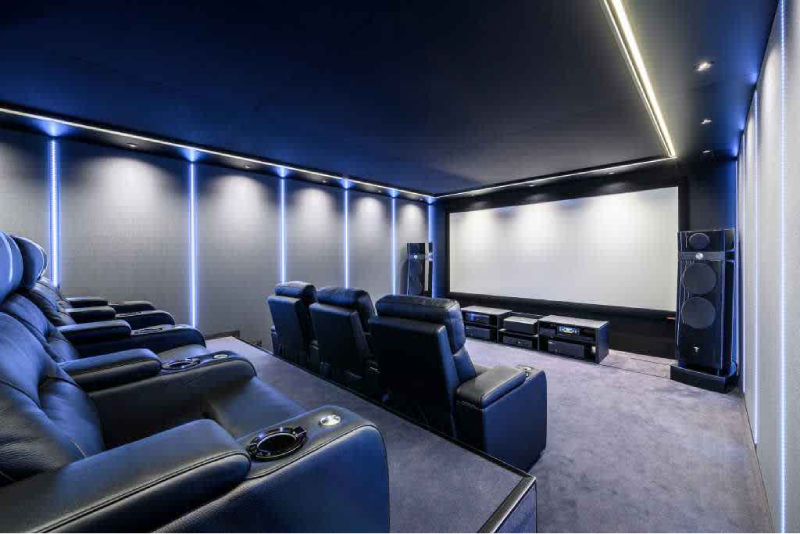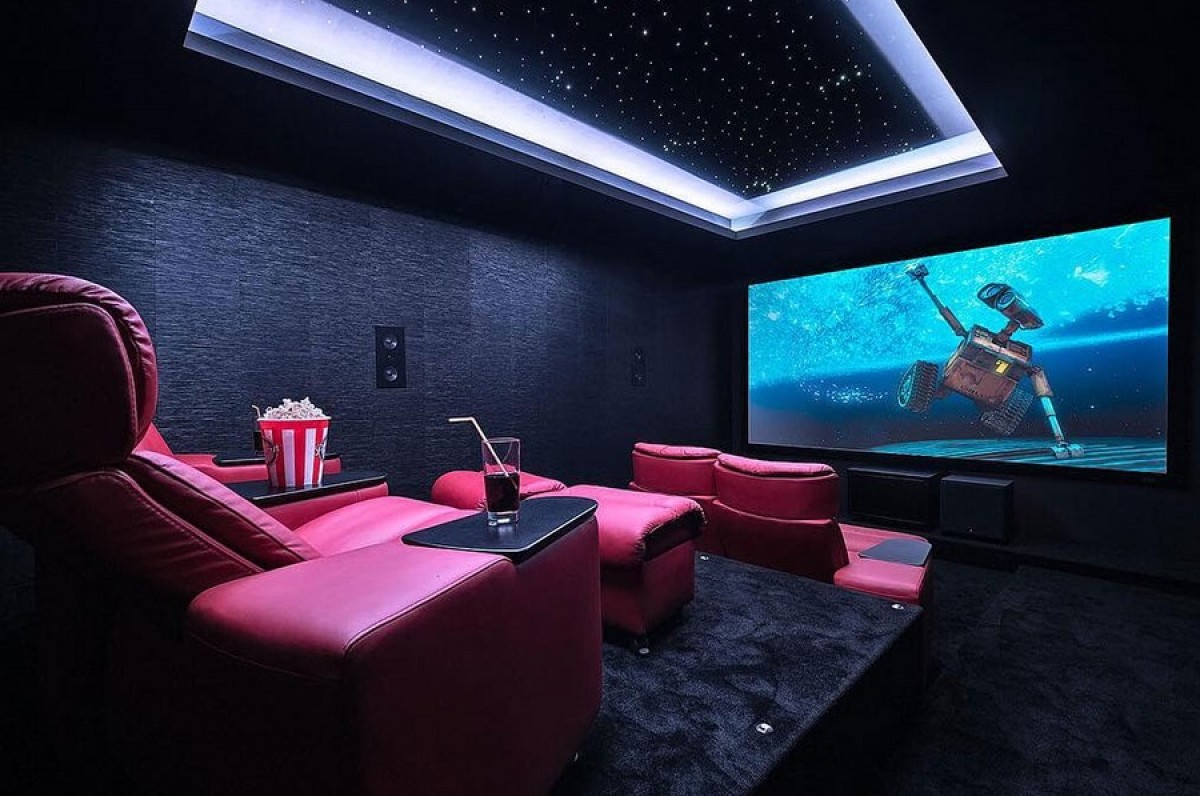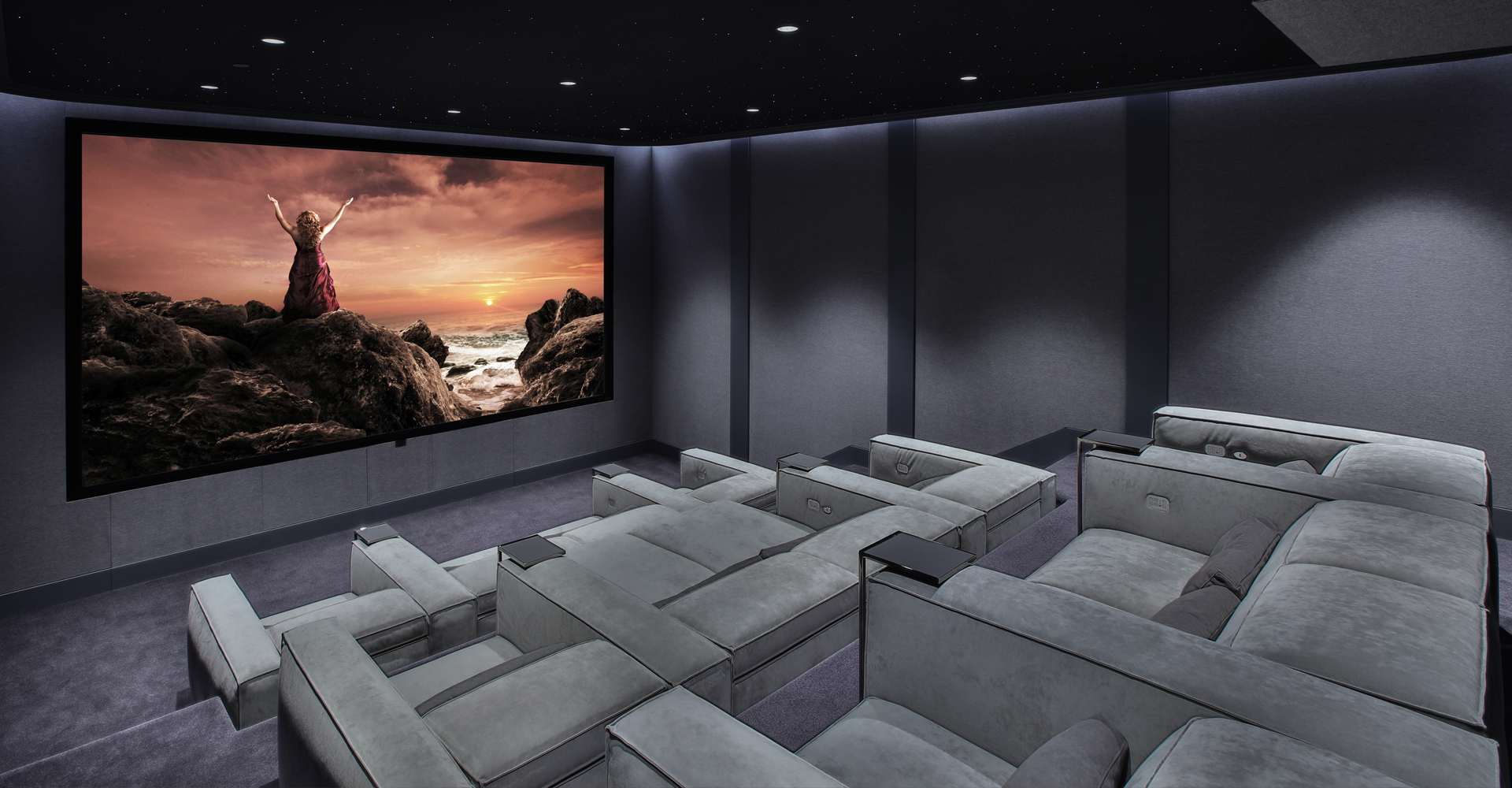Professional Tampa Home Theater Installation for a Effortless Installation
Professional Tampa Home Theater Installation for a Effortless Installation
Blog Article
Home Theater 101: Every Little Thing You Required to Know for a Motion Picture Experience at Home
Creating a home cinema that measures up to the motion picture experience of an industrial theatre includes cautious factor to consider of several components, including display option, stereo, and space layout. Each aspect plays a crucial role in achieving the preferred setting and functionality. Whether you are considering the suitable display size or the ins and outs of surround sound, comprehending these principles is crucial. As we discover these vital elements, it comes to be noticeable that the options made can dramatically impact your total viewing experience, leaving one to contemplate how these decisions will form your personal movie theater.
Picking the Right Screen
When setting up a home theater, choosing the best screen can make or damage the checking out experience - home theater tampa. The screen functions as the centerpiece of your setup, affecting image top quality, checking out angles, and general aesthetic. Key aspects to take into consideration include screen size, kind, and resolution
Initially, figure out the ideal screen size based on your room measurements and seating distance. Next off, select between numerous screen types, such as fixed-frame, mechanized, or retracting screens, each offering distinctive benefits.
Resolution is one more important aspect. For a really immersive experience, consider a display created for 4K or perhaps 8K material, making certain sharpness and clarity. Furthermore, think about the screen's gain, which impacts illumination and contrast; a higher gain can enhance illumination in well-lit areas, while a reduced gain may be better for darker environments.
Picking Sound Equipment
Audio equipment is a vital component of any kind of home cinema system, considerably boosting the overall viewing experience. The selection of audio gear can establish the deepness, clarity, and immersion of sound, critical for creating a cinematic environment.
When choosing audio devices, think about a surround audio system, which typically includes a receiver, multiple audio speakers, and a subwoofer. A 5.1 or 7.1 channel system is suggested, where the first number represents the audio speakers and the second the subwoofer, providing an immersive soundscape. The receiver is the heart of the system, managing audio and video clip signals, and must support modern formats like Dolby Atmos for an improved spatial experience.
Quality audio speakers are essential; search for versions that provide a balanced audio profile with excellent bass action. Floor-standing speakers can generate richer noise, while bookshelf options conserve room. Furthermore, think about wireless alternatives for ease of installation, although wired systems typically deliver exceptional performance.

Optimal Seating Plans
Developing a suitable home theater experience pivots considerably on ideal seating arrangements. The setup of seats plays a vital function in both comfort and viewing quality, straight affecting the total motion picture experience.
First, think about the screen size and seeing distance. A common standard is to position seats at a distance around 1.5 to 2.5 times the diagonal dimension of the display. This makes certain an immersive experience without stressing the eyes.
Following, elevation is essential. If your seats remains in a tiered style, the back rows ought to be more than the front to prevent obstructions. For level seating, ensure that the front row is not also near the screen, and that every person has a clear line of sight.
Furthermore, consider the plan in terms of social dynamics. Team seating can boost the common experience, while specific seats may be chosen for personal watching.

Lastly, prioritize comfort with ergonomic seating that sustains extended watching periods. Including recliner chairs or supported seats can significantly boost the experience, making the home cinema a recommended destination for both home entertainment and relaxation.
Lighting and Ambiance
Efficient illumination and ambiance are necessary components of a well-designed home cinema, as they substantially affect the seeing experience. The ideal lights can enhance the motion picture feeling, while poor choices can diminish it. For ideal results, take into consideration a split illumination strategy that includes ambient, task, and accent illumination.
Ambient lights provides general illumination, ensuring that the room is not entirely dark, which can stress the eyes. Dimmer buttons are extremely recommended, Web Site enabling modifications based on the material being watched. Task lighting, such as wall sconces or floor lights, provides practical illumination for activities like reading or browsing the room without interfering with the total atmosphere.
Accent lighting can be made use of to highlight building attributes or develop focal factors, adding deepness and rate of interest to the space. LED strip lights behind screens or along racks can supply a refined glow that enhances the aesthetic experience without overwhelming the visitor.

Wiring and Installation Tips
A well-planned electrical wiring configuration is vital for accomplishing ideal performance in your home cinema system. Correct electrical wiring not just guarantees high-grade sound and video signals but also improves the general aesthetic of your room. Begin by drawing up imp source your format, recognizing where each element will be positioned, including your display, audio speakers, and receiver.
When choosing cables, focus on premium, appropriately gauged circuitry Home Page to minimize signal loss. HDMI cables ought to be used for video clip connections, while audio speaker cable must match the specs of your speakers and amplifier. Go with in-wall rated cords to adhere to safety and security requirements and maintain a clean appearance.

Verdict
In summary, creating an exceptional home theater experience needs careful factor to consider of numerous aspects, consisting of screen choice, audio devices, seating setups, lights, and electrical wiring. Each part plays an important duty in accomplishing optimum performance and atmosphere, inevitably improving the enjoyment of home enjoyment. By focusing on these factors, a cinematic atmosphere can be successfully duplicated, permitting immersive viewing experiences that equal conventional movie theater settings. Interest to information in each location is necessary for overall fulfillment.
Producing a home cinema that matches the cinematic experience of an industrial theatre involves careful consideration of multiple parts, consisting of display choice, sound systems, and room layout.When setting up a home cinema, choosing the right screen can make or damage the watching experience. Next off, select between various screen kinds, such as fixed-frame, mechanized, or retractable displays, each offering unique advantages. For a really immersive experience, consider a display developed for 4K or even 8K content, making certain intensity and clearness.In recap, developing a phenomenal home movie theater experience needs careful factor to consider of numerous aspects, consisting of screen choice, audio devices, seating arrangements, lights, and circuitry.
Report this page